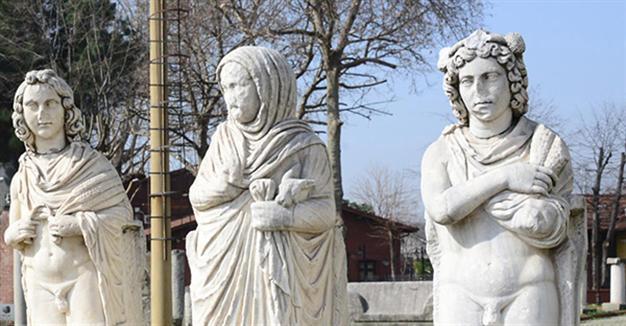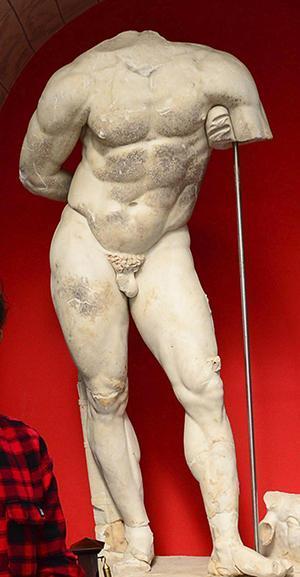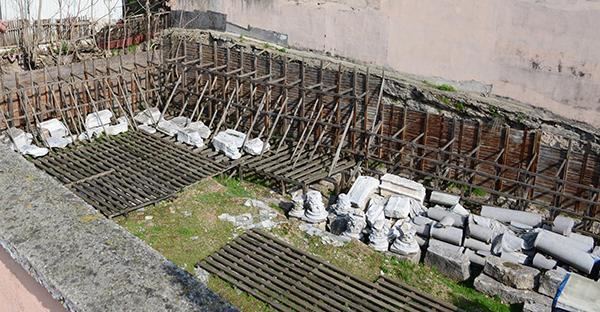Ancient underground city in İzmit excites archaeology world
ISTANBUL
 Work to unearth the remains of an ancient city, discovered in northwestern Turkey during the removal of debris after the massive Marmara earthquake of August 1999, are due to begin in April.
Work to unearth the remains of an ancient city, discovered in northwestern Turkey during the removal of debris after the massive Marmara earthquake of August 1999, are due to begin in April. During works to remove the debris of collapsed buildings after the earthquake, a number of historical artifacts were found underground in the İzmit province’s Çukurbağ district. Later on sculptures, building blocks and column stones were also found during construction works in the earthquake zone.
During works to remove the debris of collapsed buildings after the earthquake, a number of historical artifacts were found underground in the İzmit province’s Çukurbağ district. Later on sculptures, building blocks and column stones were also found during construction works in the earthquake zone. Among them was a giant headless sculpture of Heracles, which is now on display at İzmit’s Ethnography Museum. This very important piece was treated as garbage by the buildings’ owners, who threw it away out of fear that the construction would be halted. After being informed about the sculpture, however, İzmit Museum officials took the sculpture under protection.
A headless and legless Athena sculpture and a panel featuring the Roman emperors Diocletian and Konstantin embracing each other were also among the findings.
Officials then realized the existence very close to the surface of a huge palace-like structure, an ancient underground theater, and huge tunnels that extend as far as the İzmit Gulf.
Following these discoveries, the İzmit Provincial Cultural Directorate surrounded the region with wire fences and took it under 24-hour protection with private security guards.
Speaking ahead of the start of excavations, İzmit Museum Directorate head Rıdvan Gölcük said many Turkish and foreign archaeologists and researchers had applied to them to be involved in the works. Gölcük added that a large meeting would be held this month on the excavations.
“The Heracles statue was found in 2001 in Çukurbağ. Then a short-term excavation was carried out in the neighborhood. Following the expropriation process, further excavations were carried out in the same place in 2009 and unique artifacts were found. Among these artifacts, the panel of the Roman emperors was very important. It was made after the Romans won a victory against a Gothic invasion,” he said.
“Geo-radar work will be carried out in this field for the first time to determine the underground cultural artifacts there. We will start excavations in April. There is a massive monumental structure here and the archaeology world is very curious about it. The excavations will be headed by the Kocaeli Museum under the consultancy of Tuna Şare and his team from the Kocaeli University. This project is also supported by the Scientific and Technological Research Council of Turkey [TÜBİTAK],” Gölcük added.

Living atop a palace for centuries
The Foundation for the Protection and Promotion of the Environment and Cultural Heritage’s (ÇEKÜL) Kocali representative, Numan Gülşah, said houses had been built on this area of the Roman Palace, while the underground structure covered a huge area of 60,000 square meters.
Gülşah, who is also the head of the Nicomedia Academy Association, said İzmit was named Nicomedia in the ancient era and was the capital of Rome from 284 to 330. The palace there was built by Diocletian.
“My family has lived in this area for 300 years, but I had to leave my damaged home after it was damaged during the Marmara earthquake. We don’t live there anymore ... But many people living here are unaware that they have been living on a huge palace for centuries,” he said.

















